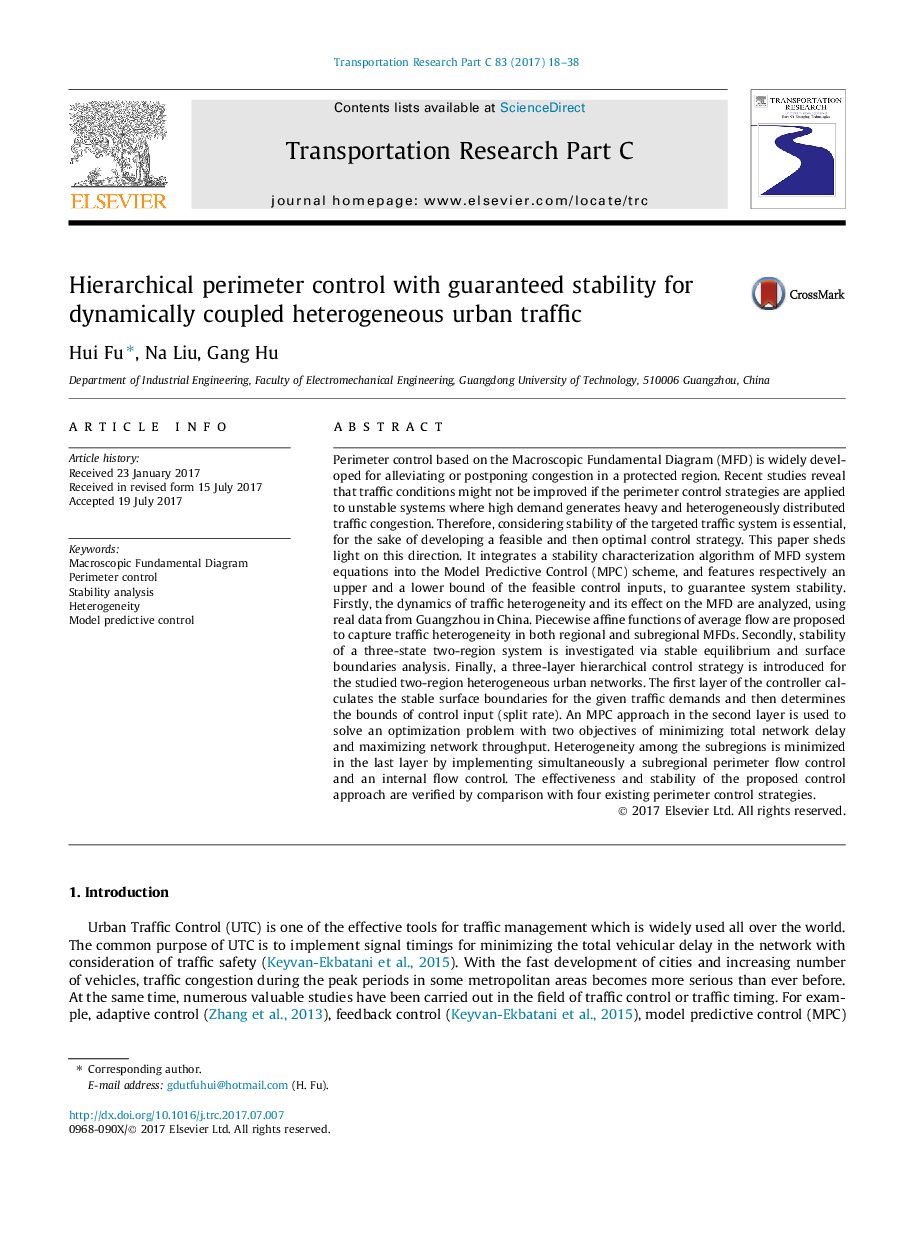| Article ID | Journal | Published Year | Pages | File Type |
|---|---|---|---|---|
| 4968468 | Transportation Research Part C: Emerging Technologies | 2017 | 21 Pages |
Abstract
Perimeter control based on the Macroscopic Fundamental Diagram (MFD) is widely developed for alleviating or postponing congestion in a protected region. Recent studies reveal that traffic conditions might not be improved if the perimeter control strategies are applied to unstable systems where high demand generates heavy and heterogeneously distributed traffic congestion. Therefore, considering stability of the targeted traffic system is essential, for the sake of developing a feasible and then optimal control strategy. This paper sheds light on this direction. It integrates a stability characterization algorithm of MFD system equations into the Model Predictive Control (MPC) scheme, and features respectively an upper and a lower bound of the feasible control inputs, to guarantee system stability. Firstly, the dynamics of traffic heterogeneity and its effect on the MFD are analyzed, using real data from Guangzhou in China. Piecewise affine functions of average flow are proposed to capture traffic heterogeneity in both regional and subregional MFDs. Secondly, stability of a three-state two-region system is investigated via stable equilibrium and surface boundaries analysis. Finally, a three-layer hierarchical control strategy is introduced for the studied two-region heterogeneous urban networks. The first layer of the controller calculates the stable surface boundaries for the given traffic demands and then determines the bounds of control input (split rate). An MPC approach in the second layer is used to solve an optimization problem with two objectives of minimizing total network delay and maximizing network throughput. Heterogeneity among the subregions is minimized in the last layer by implementing simultaneously a subregional perimeter flow control and an internal flow control. The effectiveness and stability of the proposed control approach are verified by comparison with four existing perimeter control strategies.
Keywords
Related Topics
Physical Sciences and Engineering
Computer Science
Computer Science Applications
Authors
Hui Fu, Na Liu, Gang Hu,
